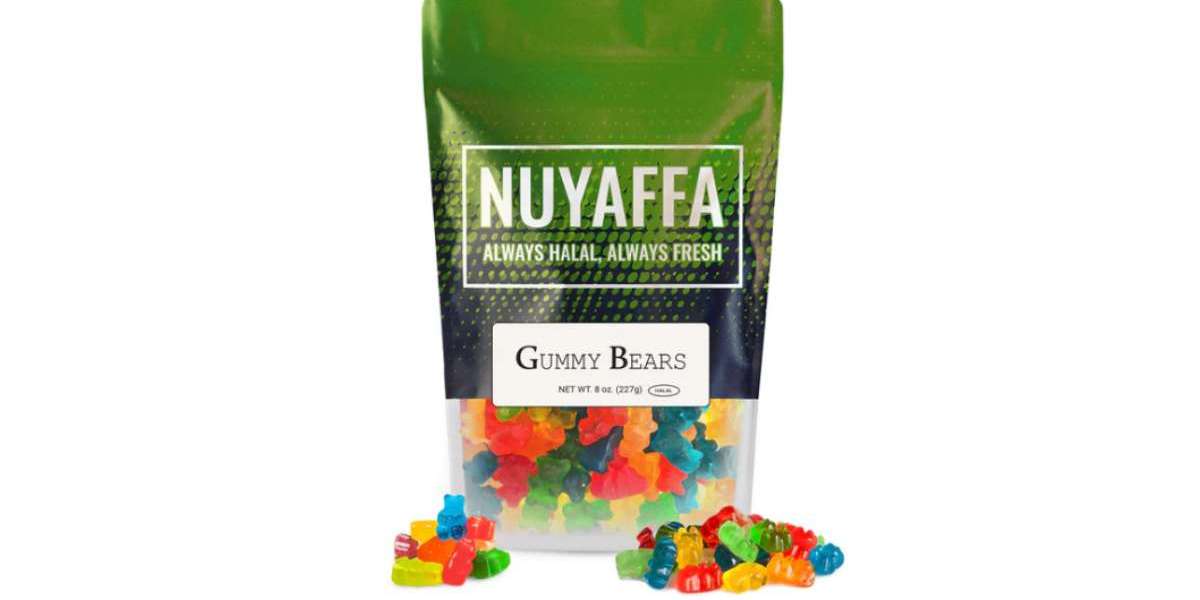Candy is a favorite treat for millions in the United States. But for Muslim consumers, finding halal candy can be a challenge. With rising demand, many brands are now offering candy that fits religious dietary needs. In 2025, the halal candy market is growing faster than ever. Whether you're shopping for your kids or indulging in a sweet craving, it's essential to understand what makes candy halal—and where to find it.
What Is Halal Candy?
Halal candy means candy made without any ingredients that go against Islamic dietary laws. This includes avoiding gelatin from pork, alcohol-based flavorings, and certain food colorings. Instead, halal candy uses plant-based or fish-based gelatin and approved flavor sources.
According to the Pew Research Center, over 3.45 million Muslims live in the United States as of 2025. This has pushed food companies to meet demand with verified halal options, especially in candy.
Why Halal Certification Matters
Certification gives Muslim consumers confidence. It means the product has been inspected and meets religious standards. Without a label, there's no guarantee. Always look for labels like:
Halal Certified by IFANCA
Halal Monitoring Services (HMS)
Islamic Services of America (ISA)
These certifications help avoid guesswork and assure families the halal candy they buy is truly permissible.
Top Ingredients to Watch Out For
When shopping, always read the label. Common non-halal ingredients include:
Gelatin (if not specified as fish or plant-based)
Carmine (a red color from insects)
Alcohol-based flavorings
Shellac (a resin from bugs)
Safer ingredients in halal candy include:
Pectin (plant-based thickener)
Agar-agar (seaweed-based)
Natural fruit flavors
Beet-based colors
Best Halal Candy Brands in the U.S.
Here are the most trusted halal candy brands:
Ziyad: Known for classic Middle Eastern candies.
The Natural Candy Store: Offers a wide range of halal-certified sweets.
YumEarth: Organic and gelatin-free, perfect for kids.
SweetZone: UK brand now in the U.S., 100% halal.
Goody Good Stuff: Makes all-natural, gelatin-free candy.
A 2024 market report found that U.S. sales of halal candy rose by 17% over the previous year.
Halal vs. Non-Halal: Key Differences
| Feature | Halal Candy | Regular Candy |
|---|---|---|
| Gelatin Source | Plant/Fish | Often Pork |
| Certification Label | Yes | Usually No |
| Alcohol Flavors | None | Often Included |
| Color Additives | Plant-Based | Can Include Insect-Based |
Making informed choices is easy once you understand these points.
Most Popular Types of Halal Candy
Halal Gummies
These chewy treats are a fan favorite. Look for ones made with pectin or agar.
Halal Chocolates
Brands like Lake Champlain Chocolates offer options without alcohol or non-halal emulsifiers.
Hard Candies
Lollipops and fruit drops are often naturally halal, especially when they’re plant-based.
Marshmallows
Halal marshmallows are made without pork gelatin. Try Smashmallow or Dandies for trusted picks.
Where to Buy Halal Candy in the U.S.
You can find halal candy in:
Middle Eastern and Asian grocery stores
Halal butchers and supermarkets
Online platforms like Amazon and Etsy
Health food stores with vegan selections
Always double-check ingredients and look for the halal certification.
Is Vegan Candy Always Halal?
Not always. Vegan candy avoids animal products, but that doesn't mean it's halal. Alcohol or cross-contamination may still be an issue. While many vegan brands are safe, certification remains key.
Why More Americans Are Choosing Halal Candy
Muslims aren't the only ones buying halal candy. Many consumers want clean, ethical, and natural ingredients. Parents feel safer offering certified halal candy to their children. It reflects transparency, and that's something all consumers value.
According to Statista, 43% of Gen Z shoppers in the U.S. look for ethical food options—including halal.
Tips for Parents Choosing Halal Sweets
Read labels closely
Teach kids about non-halal ingredients
Stick with trusted brands
Keep a list of approved products
Buy in bulk from verified sellers
“Parents today are much more informed. They want candy that’s not just fun, but safe and respectful of their values,” says Abdul Rahman, CEO of Pure Treats Co.
What Makes a Candy Truly Halal?
Ingredient source matters
No cross-contamination
Clean manufacturing equipment
Transparent sourcing
Certification by a trusted body
It’s not only about removing forbidden items—it's about clean and respectful production.
Halal Candy Market Trends in 2025
The U.S. halal candy market is expected to cross $850 million by 2026. More mainstream companies are adding halal options due to increased awareness. Millennials and Gen Z drive this shift by demanding cleaner, value-driven products.
Top regions for halal candy sales in the U.S.:
California
New York
Texas
Illinois
Michigan
Can You Make Halal Candy at Home?
Yes, it's simple with the right ingredients:
Use fruit juice and agar powder
Avoid alcohol-based extracts
Stick to natural colors like beet or turmeric
Always double-check source ingredients
DIY halal candy lets you control everything—taste, texture, and trust.
Final Thoughts
The demand for halal candy in the U.S. continues to grow. Whether for health, faith, or family reasons, it’s easier than ever to find certified, delicious treats. From chewy gummies to rich chocolates, there are options for every craving.
Stick to trusted brands. Check labels. And enjoy candy with confidence, knowing it meets your needs and values.














